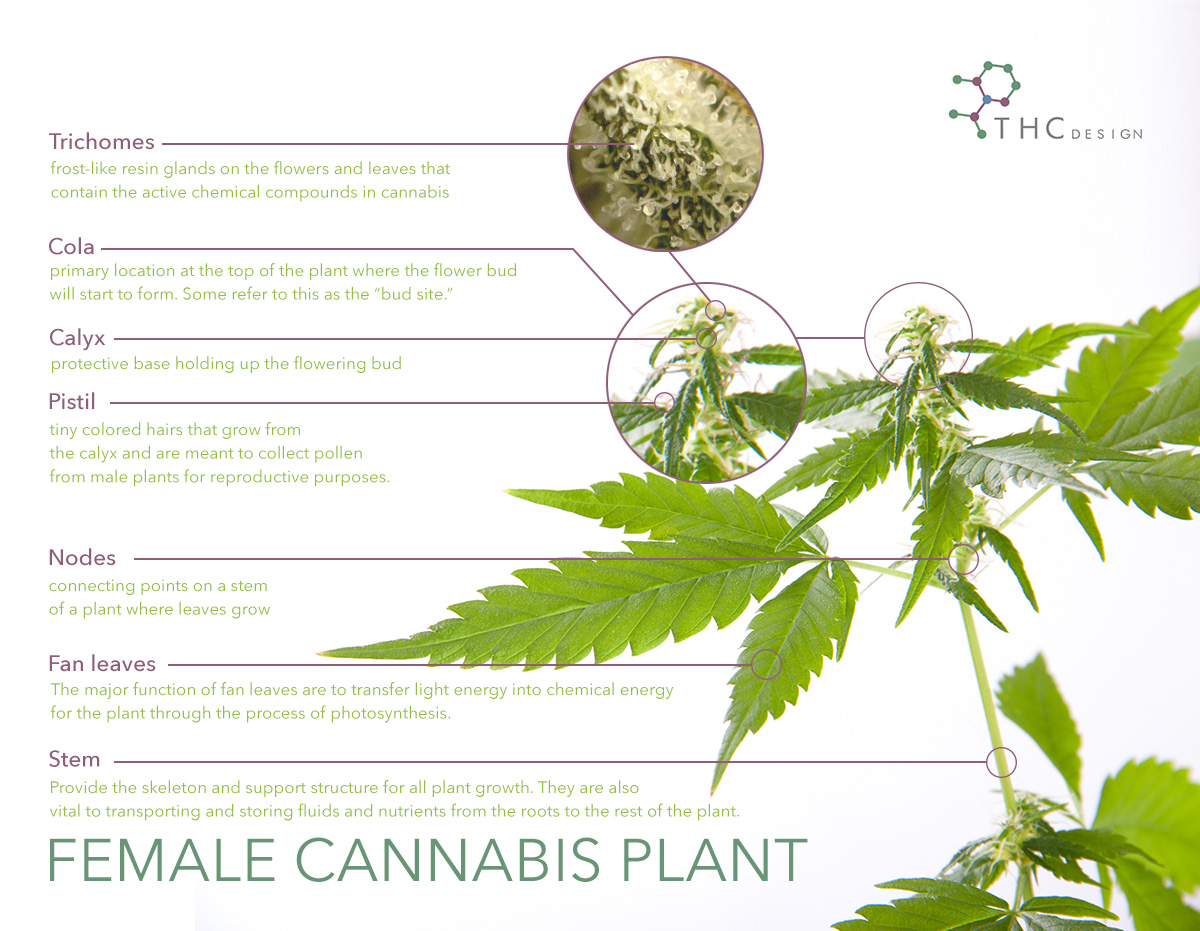We wanted to start our blog with some Cannabis plant basics. In this series, we hope to explain all the pertinent Cannabis plant facts at-a-glance. There is so much information and so much science out there and we aim to guide you through it all. In today’s information age, it’s hard to know where to start with educating yourself on the Cannabis plant. With our collective decades of experience, we decided it’s best to start from the beginning; the plant itself.
Cannabis is like every other plant. Its growth cycle starts from a seed, grows and matures over time, and ultimately flowers and then repeats the cycle until it dies. The flowers are the most desirable part of the growth process and it is no different for Cannabis. Once a cannabis plant flowers, those flowers produce resin glands that contain cannabinoids and terpenes. These flowers are what is being harvested and ultimately used or processed into different medicine and other consumable items. What we call flower, pop culture calls “bud,” “weed,” “ganja,” “pot,” etc.
Parts Of the Cannabis Plant
Flower
The flowers contain the CBD and terpenes that cause you to get high and give people a number of other benefits, interacting with the endocannabinoid system. Flowers only grow on the female plants. This is what is dried out and ground before being smoked.
Cola
The cola on the cannabis plant is a cluster of buds growing closely together, almost in a bunch. Small colas can be found up and down the low branches, but the main cola almost always sits at the top of the marijuana plant.
Pistil
The pistil is where the reproductive parts of the flower sit. They contain a lot of thin strands that look a bit like hair, called stigmas. They collect the pollen that is carried from male plants. The stigmas that can be found within are white when the plant is young but eventually turn yellow through the weed plant stages.
The pistil is all about the reproductive system of marijuana.
Bracts
The bracts are what can be found around the female’s reproductive area. They are green, with leaves in a sort of “tear shape”. They have a number of resin glands, that actually hold the highest number of cannabinoids within the marijuana plant.
Calyx
Inside the bracts, on the female cannabis plant, is the calyx. This is a see-through layer that protects the ovule. You can’t see it with the naked eye.
Trichomes
Trichomes are small but form an important part of marijuana anatomy. They make a crystal-like covering for the buds of the cannabis. Trichomes actually come from glands on the leaves, stems, and calyx of the female or male cannabis plant.
Trichomes protect the plant from anything in the wild that could harm them. They secrete terpenes and both CBD and THC.
Node
The node is where a branch grows from the stem of the cannabis plant. Or where one branch stems off and creates another. Some nodes contain buds, but not all of them.
The nodes play an important role in the sexing of a cannabis plant and telling a male cannabis plant from a female cannabis plant. More on that later.
Fan leaves
If you see clothing or accessories with a cannabis leaf on them as decoration, this will be from the fan leaves. They actually just capture light and don’t have a lot of resin within them. On a cannabis Sativa plant, the leaves tend to be further apart and more sparse.
Sugar leaves
Sugar leaves are where the resin is usually held. They’re small leaves where the buds form, and you can use them in a variety of cannabis products including pre-rolls, or to make THC and CBD extracts.
Stem
This is a term you’re probably familiar with. The stem is the same part of a cannabis plant as any other plant, and it gives structure and stability to the other parts of the marijuana plant.
The top of the stem can be cut off to encourage weed plant stages where the marijuana plant grows more branches and more buds.
How to tell male from female cannabis plants
To check the sex of a cannabis plant, you need some understanding of marijuana anatomy.
You should check in between the nodes. These are the parts of the marijuana plant where the branches spring off from a stem. On male plants, pollen sacs can be found here. On a female, stigma develops so they can catch the pollen.
You can see pre-flowers from around the fourth week of cannabis growth. In week six, it should definitely be clear what sex the plants are.
For a male marijuana plant, you’ll find small sacs growing. On females, you will find bracts on the cannabis plants. This is where the hairs that catch pollen will eventually start to grow.
How to propagate cannabis plants
There are numerous ways to propagate cannabis plants so that more will grow in the future.
Cloning
Cloning is not as daunting as it sounds. You don’t have to do it in the lab. This is where you take a cutting from a cannabis Indica or cannabis Sativa plant and put it in the ideal growing conditions in soil or hydroponics.
It’s relatively simple and reliable. It also means that you know what type of cannabis plant is going to grow, and you will have taken cuttings from a healthy “mother”. Cannabis clones are going to take all you liked about the mother plant and create another generation that grows in the same way.
Clones are delicate, and you need to get good at understanding an active vegetating cannabis plant so that you can make a clone, there is definitely a skill involved in picking the cutting, making the cutting itself, and replanting it. You probably won’t get it 100% right the first time around.
Seeds
Seeds don’t need you to grow from an initial plant, you can buy seeds and plant them just like you would any other plant, fruit, or vegetable. It takes a little longer for them to grow this way.
Seeds don’t always germinate, so there is a real art to growing your own marijuana using seeds.
One good thing about seeds is the fact that they haven’t been exposed to diseases or a bad growing environment. You can also buy feminized seeds if you want, which guarantee a certain percentage of female cannabis plants.
Another positive thing about seeds is that they can easily be shipped and transported, and you can buy a number of varieties of cannabis. You might even be able to germinate your own strands.
Whether you choose cannabis clones or growing from seeds, it doesn’t matter, as long as you make a point of becoming good at it. A lot of manufacturers prefer to use clones as it gives a much more consistent result, and allows you to know the properties of the plant that will grow.




